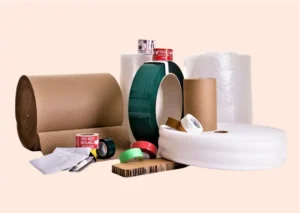Table of Contents
- 1 Smart Moves: How to Relocate Without Breaking the Bank
- 2 Purge Before Packing: The First Step to a Cheaper Move
- 3 Avoiding Hidden Costs: Understanding Relocation Estimates
- 4 Flexible Dates, Flexible Rates: How Timing Affects Moving Costs
- 5 Pack Like a Pro: DIY Methods to Save Money
- 6 When to Hold On and When to Let Go: Inventory Choices That Affect Your Wallet
- 7 Getting Creative with Transportation: Money-Saving Moving Hacks
- 8 Sealing the Deal: Why You Should Contact Us for Your Move
- 9 Author

Article-at-a-Glance
-
Decluttering can significantly reduce moving costs by decreasing the weight and volume of your move.
-
Comparing moving quotes and choosing a mid-week or mid-month move can lead to substantial savings.
-
Free moving boxes and DIY packing using household items can cut down on packing supply expenses.
-
Understanding the details of moving quotes and estimates can help you avoid unexpected charges.
-
Donating items not only simplifies your move but may also provide tax benefits.
Moving homes can be an adventure, but let’s be honest, it can also dent your wallet if you’re not careful. That’s why it’s crucial to be savvy and resourceful. I’m here to walk you through some tried-and-true strategies that can help you relocate without the financial stress. Let’s dive in!
Smart Moves: How to Relocate Without Breaking the Bank
First things first, before you even think about bubble wrap or moving trucks, take a good look around. What do you see? A home full of memories, sure, but also a lot of stuff you might not need anymore. And every extra item can add to the moving bill. So, let’s start by trimming the fat.
Digging Into Budget-Friendly Packing Supplies
When it comes to packing, the costs can stack up quicker than those old magazines you never got around to reading. Here’s a pro tip: you don’t need to buy everything brand new. Here’s how to keep it cheap:
-
Scout for free boxes at local stores or ask friends who’ve recently moved.
-
Use newspapers, towels, or clothes to cushion fragile items instead of buying bubble wrap.
-
Check community groups for giveaways on packing supplies.
These simple steps can shave off a good chunk of your packing expenses. Besides that, they’re eco-friendly choices—win-win!
Timing Your Move For Maximum Savings
Believe it or not, when you choose to move can have a big impact on your wallet. Moving companies tend to be busier on weekends and at the beginning and end of the month. What does this mean for you? Higher rates. Instead, aim for a mid-week, mid-month move. You’ll often find that movers have more wiggle room in their schedules and their pricing.
Deciphering Your Way Through Moving Quotes
Getting moving quotes can feel like decoding a secret message, but it’s actually pretty straightforward when you know what to look for. Don’t just jump at the lowest price—make sure you understand what’s included. Look for things like:
-
Whether the quote is binding or non-binding.
-
Any potential extra charges, like for stairs or long carries.
-
Reviews from past customers to gauge reliability and service quality.
Remember, knowledge is power, especially when it comes to keeping more money in your pocket.
Maximizing the Benefit of Tax Deductions on Your Move
Most importantly, if you’re moving for work, you might be able to deduct some of your moving expenses come tax time. This can include the cost of movers, renting a truck, or even driving your own car to your new home. Keep all your receipts and talk to a tax professional to see what deductions you can claim.

Purge Before Packing: The First Step to a Cheaper Move
Let’s talk about decluttering. It’s not just about creating a fresh start in your new home; it’s also about making your move cheaper. Here’s a simple truth: the less you move, the less you pay. So, roll up your sleeves and start sorting through your belongings with a critical eye.
Sorting Items: Keep, Sell, Donate
Create three categories: keep, sell, donate. Be ruthless. Haven’t used that bread maker in a year? Sell it. Those clothes you’ve outgrown? Donate them. Not only will this reduce your moving load, but selling items can add a bit of cash to your moving fund.
Because we’re being so thorough, this process might take some time. Therefore, start this step well in advance of your move to avoid last-minute panic.
Organizing a Profitable Yard Sale
Yard sales are an excellent way to turn your unwanted items into cash. To maximize your earnings:
-
Advertise your sale in local community boards and social media.
-
Price items reasonably—remember, the goal is to sell.
-
Bundle similar items for a deal to encourage more sales.
A successful yard sale not only pads your wallet but also lightens your moving load.
Where to Donate and How It Saves Money
Donating items before a move can not only reduce the weight and volume of what you need to transport, but it can also potentially qualify you for a tax deduction. By carefully selecting where to donate, you can ensure that your unwanted items help others and save you money at the same time.
Donating is a double win: you help others and potentially get a tax deduction. Research local charities that accept the items you’re parting with. Some organizations even offer free pickup, saving you the hassle and cost of transportation.
Avoiding Hidden Costs: Understanding Relocation Estimates
One of the trickiest parts of moving is dealing with estimates. To avoid a surprise on your final bill, make sure you understand the difference between binding and non-binding estimates:
A binding estimate means the cost quoted is what you’ll pay, barring any major changes in your inventory. A non-binding estimate, on the other hand, can change based on the actual weight of your move.
Ask your mover for a clear explanation of their estimate, and don’t hesitate to question anything that seems off. Transparency is key to a budget-friendly move.
Finding the Balance: Binding vs. Non-binding Estimates
Now, let’s delve deeper into the estimates. A binding estimate is your safety net—it guarantees that the price you’re quoted won’t inflate, as long as your inventory stays the same. On the flip side, a non-binding estimate is more of a gamble. It’s an initial quote based on the estimated weight of your belongings, but the final cost can change if the weight is different than expected.
Here’s a pro tip: always show the estimator everything you plan to move. No surprises mean no unexpected fees. And don’t forget to ask about any additional costs that could creep up on moving day, like charges for stairs or parking issues.
Reading Between the Lines: Hidden Fees to Watch For
Speaking of unexpected fees, it’s crucial to read the fine print. Sometimes, there are costs tucked away that can spring up and bite your budget. Look out for things like fuel surcharges, insurance, and equipment fees. If anything is unclear in the quote, ask. It’s better to know all the potential costs upfront than to be caught off guard later.
Flexible Dates, Flexible Rates: How Timing Affects Moving Costs
Timing isn’t just about clocks and calendars—it’s a strategic tool that can lead to significant savings on your move. Here’s the deal: moving companies have peak times, just like any other business. And during these peak times, prices soar.
Off-Peak Perks: Scheduling Your Move Smartly
By planning your move during off-peak periods, you can take advantage of lower rates and more flexible scheduling. This usually means avoiding summer months, the beginning and end of each month, and weekends. Aim for a weekday move in the middle of the month, and you’ll be in a better position to negotiate rates.
Last-Minute Moves: When to Splurge and When to Save
Sometimes, life throws us curveballs, and you might find yourself needing to move without much notice. Last-minute moves can be pricey, but even then, there are ways to save. If you’re flexible with your move-out and move-in dates, moving companies might offer you a discount to fill a gap in their schedule.

Pack Like a Pro: DIY Methods to Save Money
Packing services are convenient, but they can also be one of the most expensive parts of moving. The alternative? Pack yourself. It’s not just about throwing things into boxes, though. There’s an art to it, and doing it right can save you money and headaches.
Essentials of Self-Packing: A Checklist
Before you start, make sure you have a game plan. Here’s a checklist to help you pack like a pro:
-
Gather all your packing supplies: boxes, tape, markers, and padding material.
-
Start with items you use less frequently, like seasonal decorations or guest room linens.
-
Label each box with its contents and the room it’s destined for in your new home.
-
Keep a detailed inventory list. This will be a lifesaver when you’re unpacking or if anything goes missing.
Where to Find Free Packing Materials
Before you rush out to buy packing materials, consider this: many businesses give away boxes for free. Bookstores, liquor stores, and grocery stores often have sturdy boxes they’re happy to part with. For padding, use what you have at home—towels, blankets, and clothing can protect your items just as well as bubble wrap or packing peanuts. For more cost-saving tips, check out our Ultimate Guide to Compare Moving Company Prices & Save.
When to Hold On and When to Let Go: Inventory Choices That Affect Your Wallet
Every item you decide to take with you comes with a price tag. That price tag isn’t just about the cost to move it; it’s also about the space it takes up in your new home and the mental cost of holding onto things you don’t need.
Calculating Cost vs. Value When Moving Large Items
Take a good look at your large items, like furniture and appliances. Are they worth the cost of moving? Sometimes, selling them and purchasing new (or gently used) items after the move makes more financial sense. Consider factors like the item’s age, condition, and how well it will fit in your new space.
Furniture: Replace, Move, or Sell?
Here’s a real-life example: A friend of mine was moving across the country and had a hefty quote for moving her old couch. She realized she could sell the couch, add a little extra money, and buy a new one that better suited her new living room. In the end, she saved on moving costs and upgraded her furniture.
Comparing the options of replacing, moving, and selling furniture prior to a move can be summarized using the following table based on the provided search results:
|
Option |
Advantages |
Disadvantages |
|---|---|---|
|
Replacing |
New furniture, potentially higher quality and updated styles |
Expensive, lead times for delivery, risk of damage during transit |
|
Moving |
Keeps familiar items, saves money compared to replacing |
Costly, labor intensive, potential damage during transit |
|
Selling |
Reduces moving expenses, frees up space, opportunity to upgrade |
Loss of valuable items, difficulty finding suitable replacements, emotional attachment |
Getting Creative with Transportation: Money-Saving Moving Hacks
When it comes to getting your belongings from point A to point B, there are more options than just hiring a moving company. With a bit of creativity, you can find cost-effective solutions that work for you.
Rent a Truck or Borrow a Friend’s Trailer?
If you’re moving a short distance and don’t have a lot of stuff, renting a truck or borrowing a trailer might be your best bet. It’s often cheaper than hiring movers, and you have more control over the moving process. Just make sure you’re comfortable with driving a larger vehicle if you go this route.
Consolidating Moves: Shared Load Options
For longer distances, consider a shared load service. This is where your belongings are moved with other people’s items, filling up the truck and splitting the cost. It’s more affordable and environmentally friendly, as it reduces the number of trips needed.
In Transit: Keeping Your Goods Safe and Secure
Now, let’s talk about one of the most nerve-wracking parts of moving: making sure everything arrives in one piece. The question is, should you shell out extra for moving insurance? Well, it depends on what you’re moving and how much risk you’re willing to take. Most moving companies offer basic coverage, but it might not be enough to replace your valuables if something goes awry.
DIY Techniques to Prevent Damage During Moves
Packing with care is crucial, especially if you’re going the DIY route. Use sturdy boxes and ensure they’re not overpacked. Distribute weight evenly and fill any gaps with padding to prevent items from shifting. When loading the truck, place heavier items at the bottom and lighter ones on top. Secure furniture and boxes with straps to keep them in place during the journey.
Here’s a simple yet effective technique: wrap furniture legs with bubble wrap or thick blankets to prevent scratches and dents. And for your peace of mind, always label boxes with fragile items clearly, so movers and helpers know to handle them with extra care.
Don’t underestimate the power of a well-packed box. It’s the difference between your grandma’s china arriving in one piece or in a hundred. Use towels, socks, and even crumpled paper to cushion delicate items, and remember to label these boxes as ‘Fragile’.
-
Wrap individual items with bubble wrap or newspaper.
-
Place heavier items at the bottom of boxes and lighter items on top.
-
Label each box with its contents and the room it belongs in.
Remember, the time you spend packing carefully can save you money and heartache in the long run.

Sealing the Deal: Why You Should Contact Us for Your Move
You’ve got the tips and tricks, but sometimes you need a little extra help. That’s where we come in. We’re here to offer you affordable moving solutions that don’t skimp on quality. Whether you need advice, supplies, or someone to take the wheel on moving day, we’ve got your back.
Our Affordable Rates and Unbeatable Value
We understand that moving can be expensive, which is why we offer competitive rates that work with your budget. But affordable doesn’t mean cheap service. We pride ourselves on providing value that exceeds the price tag. From providing sturdy boxes to offering efficient transportation, we ensure your move is cost-effective and stress-free.
Personalized Moving Plans to Fit Your Budget
Every move is unique, and we get that. We’ll work with you to create a personalized moving plan that aligns with your financial plan. Whether you’re looking to do most of it yourself or need full-service help, we’re here to support you every step of the way. Our goal is to make your move as smooth and affordable as possible.
Don’t let moving costs keep you up at night. Contact us today, and let’s start planning your budget-friendly move together. We’re not just movers; we’re partners in making sure your transition to a new home is a success.
And if you’ve got more questions, we’ve got answers. Check out our FAQs below for more cost-saving tips and advice.
FAQs
Got questions? We’ve got answers! Here are some of the most common queries we receive about moving on a budget:
How can I find free moving boxes near me?
Look for boxes at local businesses like grocery stores, bookshops, or liquor stores—they often have plenty to spare. Join community groups or use social media marketplaces where people in your area might be giving away boxes and packing materials.
Is moving insurance necessary for a budget-friendly move?
It’s not mandatory, but it’s worth considering, especially if you’re transporting valuable items. Weigh the cost of insurance against the value of your belongings to decide if it’s right for you.
What is the cheapest day of the week to move?
Typically, weekdays—Monday through Thursday—are less expensive than weekends. Most people move at the end of the week or month, so moving companies are more likely to offer discounts on quieter days.
How much can I really save by decluttering before a move?
Decluttering can save you a surprising amount of money. By reducing the volume of items you’re moving, you can lower the cost of moving services, supplies, and even the time it takes to unpack.
Can I really save money by packing myself?
Absolutely! Packing yourself can significantly reduce your moving expenses. Use household items for padding and look for free boxes to save even more. Just make sure you start early and pack carefully to avoid damage.
If you’re ready to get moving without the hefty price tag, don’t hesitate to reach out to us. We’re here to help you every step of the way, ensuring your move is as economical as it is efficient.



